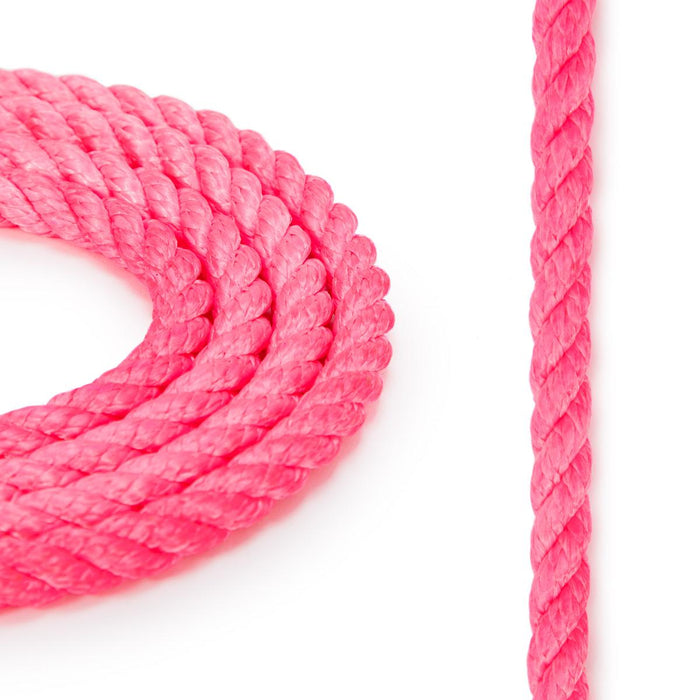
3-Strand Bull Rope
Weight: 0.05 lb

This is a polyester three strand rope coated with a special coating for abrasion resistance.
Typically you would find this rope used by arborist for tree rigging use, although it can be commonly found in any industrial application where an affordable and durable twisted rope is needed.
One inherent characteristic of this rope is the fact that it is a "rotational" rope. This means that if a load is lifted or lowered with this rope the item being suspended will have a tendency to rotate/twist. This might be something to be aware of if you plan on attaching a heavy item to the end of this to lift or lower. Adequate clearance needs to be in place in order not to damage life, limb or property.
The 1/2" works great the Maasdam Rope Puller!
While this is a great rope for the money, if you need something with the same ability but in a much stronger construction, you can check out our BRAIDED BULL ROPES.
| Diameter | Breaking Strength | Color | Elongation |
|---|---|---|---|
| 3/8" | 3,400 lbs. | Pink | 7% @ 30% of Breaking Strength |
| 1/2" | 6,400 lbs. | Blue | 7% @ 30% of Breaking Strength |
| 5/8" | 9,300 lbs. | Red | 7% @ 30% of Breaking Strength |
| 3/4" | 11,300 lbs. | Orange | 7% @ 30% of Breaking Strength |
Wherever possible, use splices constructed to safe specifications. A proper splice on a rope can maintain 80% to 100% of the new rope average break strength. Trained personnel should construct all splices. If knots are used on a rope, be aware that they can reduce the rope's strength by up to 50%. If knots are required, be sure to select the proper knot for the job.
All rope has a rating referred to as a "tensile strength" or "average break strength." This number is the amount of weight that the rope should be able to hold in ideal conditions, specifically, a new rope, with no knots or splices, at room temperature. These break strength numbers are based on actual destructive break testing by the manufacturer or a certified third-party testing facility. Ropes are tested over many cycles and the average break strength is determined and specified for the product. We test our ropes personally, and all our splicers have their work tested on an ongoing basis using a certified test bed facility. This is to ensure that their splicing work is perfect, and that their splicing technique and skills are 100% within acceptable splicing guidelines set by the rope industry. Even the best splices and best rope can break if overloaded or used improperly. Make sure you thoroughly understand what you are doing with a rope. Get the right rope for the right job. If you have questions or are even remotely unsure or have doubts. STOP and get the information you need to BE SURE you are doing things safely.
Rope wear, knots, extreme hot or cold temperatures, chemicals, the manner in which the load is applied and other factors will result in a break strength lower than the stated average break strength.
A rope with a stated or advertised break strength, in pounds will not necessarily safely hold something that weighs that amount! Refer to the SAFE WORKING LOAD of a specific rope for more information.
IF IN DOUBT, ASK A PROFESSIONAL. We get calls all the time from people who have questions about what is the best rope to use for any given application. Don't be afraid to ask. Ultimately YOU are responsible for your safety using ANY rope, so don't chance it.
In a broad generalization, most working loads vary from 1/10 to 1/4 of the average break strength of the rope. Applications for rope used in life support or personal fall protection environments must use the 1/10 ratio.